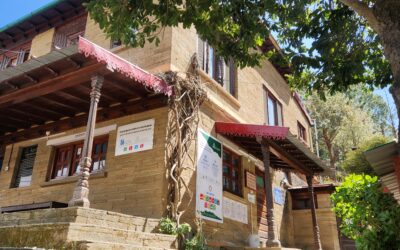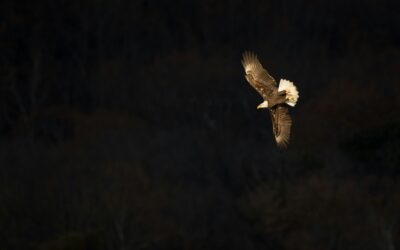A recent trip to Durgadahalli, two hours bus ride away from Bengaluru, was full of gratifying experiences, serendipitous moments and much room for contemplative thinking. A few months back, while going through JANASTU’s open docs, at the peak of inspiration, I ended up writing an impulsive but sincere email to T B Dinesh, the organisation’s founder. He was kind and generous to simply extend an invitation to his home.
At first, I was a little hesitant about making this trip all the way from New Delhi. All the constraints and logistics did not make it seem like a real possibility for me. But with some support and wisdom of friends and colleagues, I decided to make this trip and thankfully so. As I return home from this short trip, I take with me some new found inquiries, much needed inspiration, a sense of camaraderie and a fruit.
What Is Your Mother Tongue?
A two hour bus ride from Bengaluru brought me to Tumkur on my first day. This is where I was waiting for Dinesh to pick me up. I had some tea and indulged in a freshly baked pastry in one of shops near the bus stop. Soon enough, I saw him waving at me from inside his car. He was joined by two of his colleagues. As we started moving from the bus stop, I remember vividly, I was asked “What is your mother tongue?”.
As someone who has lived most of his life in Punjabi/Hindi speaking urban pockets, this wasn’t a question I was quite familiar with. Nonetheless, since this was also my first time in one of the Dravidian-language speaking regions, the familiarity of this question grew on me over the next two days.
I was quite unaware of where we were going. I had assumed that from Tumkur, we will be going towards Durgadahalli, which is where JANASTU primarily works. But after listening to my hosts figure out wayfinding in Kannada amongst themselves, I could make sense of at least this much that we are going to one of the nearby Krishi Vigyan Kendra (KVK). This was, in fact, something that was constant throughout my time there. I often found myself listening to other people speak (in Kannada) more than I usually do. I would try and listen to proper nouns or English-sounding words to make sense of the conversation. In this case “KVK”.
But as soon as someone would observe me trying to listen hard, they would let me in on the conversation by translating it to English for me. On the way, I had the chance to introduce myself and my work and learn a bit about their work.
JANASTU is a people-oriented open-source collective. Since the inception of the non-profit in 2002, they have worked to build decentralized community owned networks, designed tools for inclusion of low-semi literates as internet citizens and facilitated crafts literacy through various community-based entrepreneurship ventures.
We were to make a quick stop in Tumkur on our way to KVK to drop some of the handicraft products made in the Crafter Space in Durgadahalli to their buyer.
Technology And Its Reach
I hold a lot of enthusiasm and curiosity for alternative ways of working with software and technology. So, I was sitting in the back seat of this car holding many questions and thoughts I wanted to share with Dinesh and Shalini. Both of them have, for years, built and sustained an inspiring practice with the community in Durgadahalli with alternative, community-owned and decentralized technology at its core. One of the biggest challenges one is expected to face in such contexts is to move away from a global, imperialist definition of technology which we have come to learn in our world today.
“How do we move away from a singular viewing of ‘technology’ to a more plural, shared and bottom-up definition of technology in practice”, I asked. “It is a matter of semantics”, said Dinesh in a quaintly monotonous voice. He continued, “when we first started out, we faced very similar situations. It has taken quite a few years for us to learn that the community knows better.”
Deep in my thoughts, I realized that we had reached our destination finally. The presentation we were all going to attend was happening in the experimental horticulture department of the Krishi Vigyan Kendra, Hirehalli. This campus was well-built with multiple buildings scattered around all the green cover, gardens and lawns. As we walked towards the auditorium, I asked “do you think this presentation is going to be delivered in Kannada?”. To which Dinesh replied, “Probably, it is for the local farmers after all. But I imagine you’d be able to follow-along since it is hard to talk about technology without a bit of English”, he continued as we entered the auditorium.
An Unusual Presentation
The presentation was titled co-creation of digital tech solutions with farmer producer companies and innovators. The room had approximately 20-25 people in the audience. Since we were slightly late, we quietly took our seats and listened in. At this moment, I realized that Dinesh was right after all. Even though the speaker was using Kannada to explain different technological interventions as part of their presentation, I could easily follow-along with what was happening on the slides. Is there even an accurate translation for “data-interpolation” in Kannada, I thought.
The presentation went on for 20-minutes or so and I must say that it took me by surprise. I was a bit skeptical about the treatment (or the lack thereof) of technology-related conversations, especially in contexts where the access to most of these technologies itself is a concern.
In most of my previous experiences, technology was always talked about in superficial, dreamy and aspirational ways. But this time, not only did the presenter ensure translation of technical information to the regional language, the presentation almost always showed an example that was contextual, local and accessible.
Most of the cases presented in the session demonstrated how AI-based technological solutions could increase the accuracy and precision of agricultural surveying. For example, a solution used drone-based imaging technology to make precise calculations of how well trees have seasoned based on the shape and color density of the shape of the tree crown. It was very re-affirming for me to see the participation and engagement of the audience while the presenter was presenting. In between the slides, a sudden question from the audience diffused the presenter’s expertise. This led to the start of a more participatory discussion amongst the audience.




0 Comments